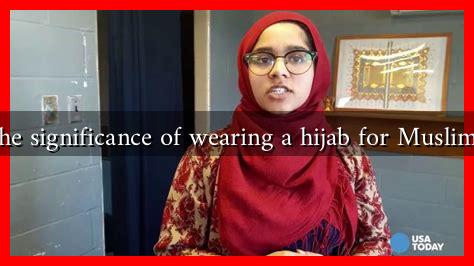-
Table of Contents
What is the Significance of Wearing a Hijab for Muslim Women?
The hijab, a headscarf worn by many Muslim women, is often a topic of discussion and debate in various cultural and social contexts. While some view it as a symbol of oppression, for many women, it represents empowerment, identity, and faith. This article explores the multifaceted significance of wearing a hijab, delving into its religious, cultural, and personal dimensions.
Religious Significance
For many Muslim women, wearing the hijab is primarily a religious obligation. The Quran, the holy book of Islam, emphasizes modesty in both behavior and dress. The verses that discuss modesty include:
- Surah An-Nur (24:30-31): Advises believing women to lower their gaze and guard their modesty, and to draw their veils over their bosoms.
- Surah Al-Ahzab (33:59): Instructs the Prophet Muhammad to tell his wives and daughters, as well as the women of the believers, to draw their cloaks around them for modesty.
These verses are interpreted by many scholars as a directive for women to wear the hijab as a means of fulfilling their religious duties. The hijab serves as a physical manifestation of a woman’s commitment to her faith and her desire to adhere to Islamic principles.
Cultural Identity and Heritage
The hijab also plays a significant role in cultural identity. For many Muslim women, wearing the hijab is a way to express their cultural heritage and connect with their community. It can serve as a symbol of belonging and solidarity among Muslim women worldwide. The significance of the hijab varies across different cultures:
- In Middle Eastern countries, the hijab is often seen as a traditional garment that reflects local customs.
- In Western countries, wearing the hijab can be an assertion of identity, especially in multicultural societies where Muslim women seek to maintain their cultural roots.
For instance, during the annual World Hijab Day, women from various backgrounds come together to wear the hijab, promoting understanding and acceptance of Muslim women’s choices. This event highlights the cultural significance of the hijab as a bridge between communities.
Personal Empowerment and Choice
Contrary to the perception that the hijab is a symbol of oppression, many women view it as a source of empowerment. The choice to wear the hijab can be a personal decision that reflects autonomy and self-expression. Some key points include:
- Empowerment through choice: Many women choose to wear the hijab as an expression of their identity and beliefs, asserting their right to make personal choices about their bodies.
- Rejection of societal standards: Wearing the hijab can be a way to challenge societal norms regarding beauty and femininity, allowing women to define their worth beyond physical appearance.
For example, a study conducted by the University of Michigan found that Muslim women who wear the hijab often report higher levels of self-esteem and body image satisfaction compared to those who do not. This suggests that the hijab can serve as a protective factor against societal pressures related to appearance.
Challenges and Misconceptions
Despite its significance, wearing the hijab can also present challenges. Many Muslim women face discrimination and misunderstanding in various contexts, particularly in Western societies. Some common misconceptions include:
- The belief that all Muslim women are forced to wear the hijab.
- The assumption that wearing the hijab limits a woman’s freedom and opportunities.
These misconceptions can lead to social stigma and discrimination, impacting the lives of Muslim women. Advocacy and education are essential in addressing these issues and promoting a more nuanced understanding of the hijab.
Conclusion
The significance of wearing a hijab for Muslim women is deeply rooted in religious beliefs, cultural identity, and personal empowerment. While it can be a source of pride and a means of expressing faith, it also comes with challenges and misconceptions that need to be addressed. Understanding the diverse meanings behind the hijab can foster greater empathy and respect for Muslim women’s choices. As society continues to evolve, it is crucial to recognize the hijab not merely as a piece of clothing but as a complex symbol of identity, faith, and empowerment.
For further reading on the topic, you can explore resources such as Islamic Relief and World Hijab Day.


